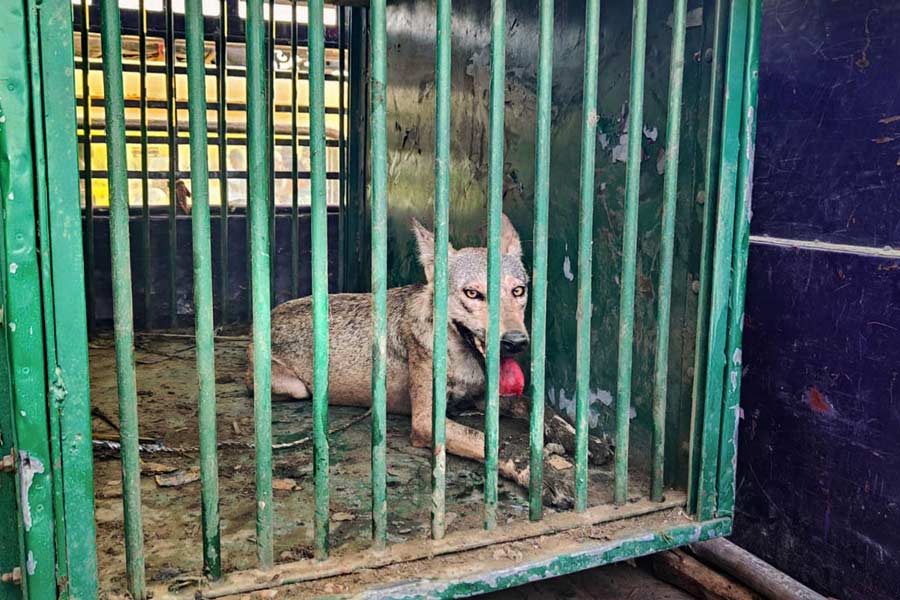The wolf has had a chequered legacy in human culture. There are, for instance, the teflon-coated wolves in myth and literature. Rome’s founders, it is believed, were raised by a she-wolf: then again, in Rudyard Kipling’s The Jungle Book, it is a wolf pack led by the noble Akela that shelters Mowgli and resists the evil striped lord of the jungle. But the Big Bad Wolf has often overshadowed its honourable brethren. There is the sly wolf that salivated at the prospect of devouring Little Red Riding Hood; also Fenrir, a monstrous wolf, has also cast its long shadow over Norse mythology. India, too, has contended with not-too-benign wolf packs at different points of time.
A pack of wolves — five out of the six were caught, with one dying in captivity — has been terrorising the stretches of land near the forests of Bahraich in Uttar Pradesh recently. The deaths of 10 people, mostly children, have been blamed on these animals. Rogue wolves, incidentally, are not a novelty in India. At least 80 children were reported to have been killed by wolves between 1993 and 1995 around Hazaribagh; Uttar Pradesh suffered a similar spell of terror in 1996; records from the days of the raj have also pointed to similar gory incidents with one Captain B. Rogers of the erstwhile Bengal Army stating that wolves and tigers killed 4,287 and 4,218 people, respectively, in Bengal in 1866. The causes of such fatalities are varied but, more often than not, induced by human depredations. Scientists and wildlife experts believe that adversarial human interventions — the conversion of forests into farms, decimation of jungles for forest produce, annihilation of the wolves’ prey base for human consumption — have been instrumental in worsening the episodes of such man-animal conflict. A wide swathe of India has, over the decades, been vulnerable to wolf attacks: Uttar Pradesh, Bihar, Jharkhand, Madhya Pradesh, Rajasthan, Bengal are among the states that have witnessed such incidents periodically. It would be worthwhile to investigate whether these states, more than others, have been prone to the causal factors identified by scientists when it comes to wolves turning on humans.
An additional, evolving challenge is unfolding with the onset of climate change. Modern science believes that changes in ecological settings as well as degradations in the natural world brought about by a changing climate are causing discernible shifts in the environmental cues that animals depend on to execute such crucial functions as the selection of habitat and the choice of prey. As human settlements encroach upon the remaining spots of wilderness, bringing about tumult in species’ food chains, their consumption habits, and codes of predatorial behaviour, could their responses, especially those of the carnivores, be acquiring an ominous edge? After all, science has already documented alterations in animal behaviour in response to climate change: Monarch butterflies, to cite one example, are delaying their southern migration on account of rising temperatures. There is no reason to believe that the transformations
in species behaviour would be innocuous on all occasions. In India, there are increasing reports of attacks on humans by jackals and feral dogs. These developments must not lead to the fanning of superstitions and exercises in culling species. What is needed is rigorous scientific investigation to analyse and, hopefully, mitigate these challenges.











